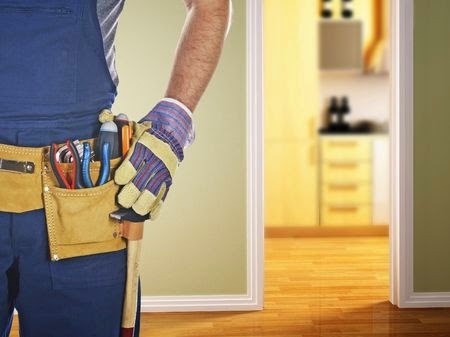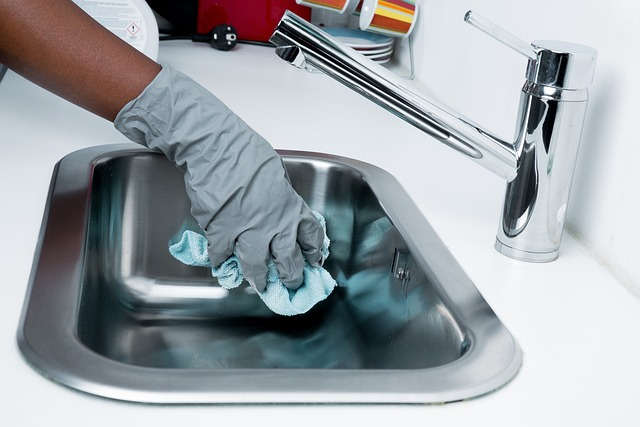Any individual seems to have their own rationale with regards to 10 Common Rental Property Repairs.

Managing pipes concerns in rental residential or commercial properties successfully is critical for maintaining occupant contentment and preserving the building's worth. Whether you're a landlord or a home supervisor, recognizing how to deal with these typical troubles can conserve you money and time while ensuring compliance with legal obligations. Right here's a detailed overview on exactly how to deal with plumbing problems in rental residential properties.
Develop Clear Interaction
Urge lessees to report any kind of pipes concerns as quickly as they take place. Give numerous communication channels such as phone, e-mail, or a lessee site to make it very easy for them to connect. Motivate reactions to these reports can prevent minor issues from escalating right into significant troubles.
Enlighten Occupants
Inform your occupants regarding what makes up a plumbing emergency and what does not. Give standards on just how to manage minor problems themselves, such as utilizing a plunger to unclog a commode. Additionally, notify them regarding what they should avoid taking down drains pipes to avoid clogs, such as oil, coffee premises, and non-biodegradable products.
Regular Upkeep
Carry out a routine maintenance schedule for all pipes systems in your leasing residential properties. Routine checks can help identify and settle problems like leakages, sluggish drains pipes, or rusty pipes prior to they end up being major. Take into consideration working with an expert plumbing technician to examine the residential or commercial properties each year or semi-annually.
Quick Action to Emergencies
Have a strategy in place for replying to plumbing emergency situations. This must include having the call information of trusted pipes solutions that use 24/7 emergency repair services. Quick action is essential to lessen damage in circumstances like ruptured pipes or extreme leaks.
Record Everything
Maintain comprehensive documents of all reported plumbing problems and the activities taken to solve them. Documentation must consist of days, descriptions of the issue, interaction with tenants, and invoices from contractors or plumbing technicians. This details can be important for insurance policy claims, tax obligation reductions, and legal security.
Usage Qualified Professionals
Constantly use accredited and insured specialists for significant pipes repairs and setups. This makes certain that the work is up to code and can assist stay clear of liability issues in case of mishaps or more damages. It also assures occupants that repairs are being dealt with skillfully.
Understand Lawful Duties
Be aware of your legal obligations pertaining to pipes and general residential or commercial property maintenance. A lot of territories call for landlords to ensure their residential or commercial properties are habitable and that all plumbing systems are in good working order. Failure to attend to severe problems without delay can bring about legal actions from tenants.
Renter Reimbursements
If a plumbing issue requires immediate attention and the lessee resolves the problem by themselves, have a clear plan in place for repaying costs. Guarantee renters know they should obtain prior approval for higher-cost repair work unless it's an absolute emergency.
Preventive Upgrades
Consider updating older pipes systems and components to a lot more contemporary, effective models. This can reduce the frequency and extent of pipes problems and lower long-term maintenance prices. It's also a marketing factor for prospective tenants that value upgrades and modern-day functions.
Tenant Move-Out Inspections
Conduct thorough pipes checks throughout move-out evaluations to ensure that any kind of problems are identified and addressed prior to a new tenant relocate. This protects against conflicts with new lessees over pre-existing conditions and ensures the property remains in top problem.
Conclusion
Handling plumbing issues in rental buildings needs a proactive technique and good interaction with renters. By remaining on top of maintenance, responding immediately to emergency situations, and making use of professional experts, property managers can keep their residential properties in superb condition and keep great relationships with renters.
How to Handle Water Damage in a Rental Property
What is Water Damage?
Water damage is harm or destruction caused by water entering areas where it is not supposed to be. It can be caused by a variety of sources and can manifest in different ways. The most common examples of water damage include:
Leaking roof Plumbing leaks Appliance malfunctions Poor drainage Flooding Sewage backup Condensation Tenant negligence HVAC system issues Frozen pipes Is water damage dangerous?
Water damage itself is not inherently dangerous, but it can lead to various hazards and health risks if not promptly and properly addressed. The severity of these risks depends on the extent of the water damage, the source of the water, and how quickly it is mitigated.
Some potential dangers associated with water damage include structural damage, mold and bacterial growth, electrical hazards, water contamination, and pest infestations. In situations where mold and mildew have gone unaddressed, mold can start to develop within 24-48 hours of water exposure, and this can impose a serious health risk to tenants. In particular, mold spores and damp conditions can lead to respiratory issues and even make existing health problems worse, such as allergies, asthma, or immune disorders.
Water Damage in an Apartment - Who is Responsible?
If the water damage is caused by the tenant’s negligence, the tenant is responsible for the cost of repairs. If the water damage is caused by a defect in the property, the landlord is responsible for the cost of repairs. If the water damage is a result of natural causes, such as excessive rain, then the landlord is responsible, since the water intrusion likely occurred due to a defect in the property. Landlord Responsibility water damage in rental property
Since maintaining habitability is the landlord’s legal responsibility, landlords are responsible for any resulting structural damage caused by water damage. These structural damages may include damage to walls, roofs, ceilings, and flooring. If water damage has affected the rental property’s original structure, the landlord is responsible for repairing or replacing those materials. Therefore, landlords should have property insurance that covers the structural components of their rental property so that they can receive help with the costs of covered events.
Preventative measures can also help landlords avoid massive renovations. Preventative maintenance may include conducting regular inspections to identify and address potential water damage before it becomes a major and urgent problem.
If a landlord fails to meet their responsibilities regarding water damage, it can lead to legal disputes and potential liability. Tenants who believe their landlord is not addressing water damage issues in accordance with California law can seek legal advice or contact local housing authorities for assistance.
https://www.goodlifemgmt.com/blog/water-damage-in-a-rental-property/

As a passionate person who reads on How can you handle tenant plumbing issues effectively, I think sharing that segment was beneficial. For those who liked our page kindly make sure you remember to pass it around. Thank you so much for going through it.